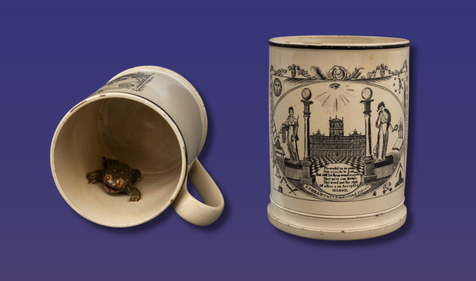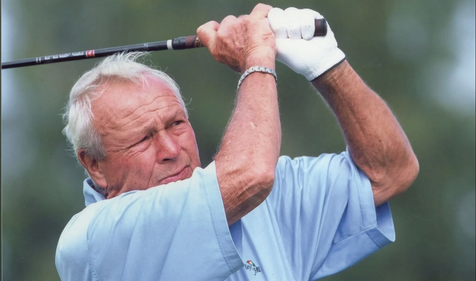Discover the remarkable story of Brother Marquis de Lafayette, who played a pivotal role in the American Revolution and built a legacy of bravery, Brotherhood, and patriotism.
“Humanity has won its battle. Liberty now has a country.” – Gilbert du Motier, Marquis de Lafayette
Throughout Masonic history, many of our Brethren left behind legacies that forever changed our country's history. One was Illustrious Brother Marquis de Lafayette, 33°, a figure so renowned for his pivotal role in the American Revolutionary War, that he earned the title "The Hero of the Two Worlds." While still just a young man, he inherited a noble title and vast fortune, yet despite his aristocratic background, he was driven by a profound sense of duty and a passion for the revolutionary ideals taking root in America.
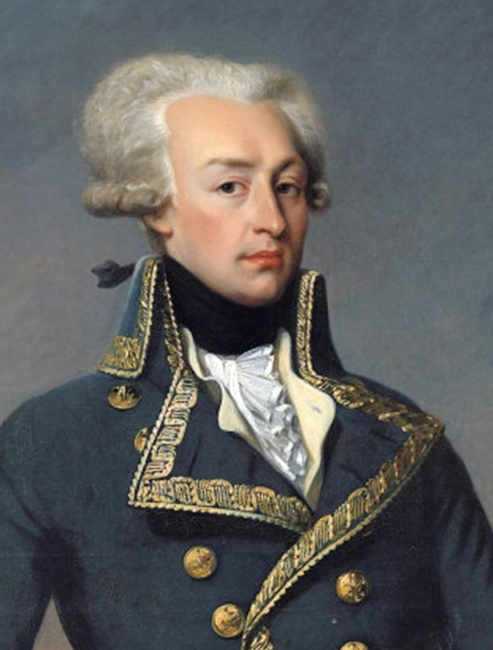
Brother Lafayette's strategic prowess on the battlefield and diplomatic maneuverings with his home country were instrumental in winning the conflict that gave rise to our great nation. One of the Scottish Rite, NMJ's Core Values is "Devotion to Country," and it is only fitting that we celebrate his extraordinary contributions to our history. We honor the Marquis de Lafayette not only as a hero of the American Revolution but also as a symbol of the enduring bond between Freemasonry and patriotism.
The Young Marquis
The Marquis de Lafayette was born Marie-Joseph Paul Yves Roch Gilbert du Motier on September 6, 1757, at the Château de Chavaniac, near Le Puy-en-Velay in Auvergne. His paternal family was of military nobility and known as a courageous and chivalric lot. An early ancestor, Gilbert de Lafayette III, served as a Marshal of France and was a companion to Joan of Arc during the Siege of Orléans in 1429. His maternal great-grandfather, the Comte de La Rivière, was the commander of the "Black Musketeers," King Louis XV's horse guard.
The life of Brother Lafayette was met with tragedy early on. His father, Michel, was killed at the Battle of Minden in 1759, leaving him the title of Marquis and Lord of Chavaniac while still just a toddler. He spent his childhood in Chavaniac before moving to Paris in 1768 to enroll at the Collège du Plessis as his mother and great-grandfather were determined he would continue his family's martial tradition and train for the Musketeers. Just two years later, tragedy struck again when both his mother and grandfather passed, leaving the boy with a substantial income. By 1771, at just under 14, Brother Lafayette was commissioned an officer in the Musketeers with the rank of sous-lieutenant.
Around this time, Jean-Paul-François de Noailles, Duc d'Ayen, sought a match for his daughter, Marie Adrienne Françoise. The young Lafayette was deemed suitable for the duke’s daughter, and the two spent the next few years getting to know each other before marrying. It proved to be a smart match. The two fell in love, married in 1774, and remained devoted to each other until Marie died in 1807.
After the wedding, Brother Lafayette lived with his young wife in his father-in-law's house in Versailles. There, he continued his education at the riding school of Versailles alongside future King Charles X and at the prestigious Académie de Versailles and was commissioned as a lieutenant in the Noailles Dragoons.
Around this time, there was another significant development in the young man’s life: he became a Freemason. Because there are no official lodge records to confirm where and when Brother Lafayette was raised, the specifics remain disputed. Masonic historians in France believe he joined either Loge La Candeur or Loge Contrat Social of Paris, while those in America think it is possible he was not raised until a few years later after he enlisted in the Continental Army. Some even think General George Washington himself acted as Master of the Lodge during Lafayette’s initiation ceremony at Valley Forge in 1777.
From Aristocrat to Revolutionary
The French aristocracy knew well of the ongoing revolt of the North American colonies against the British, with whom Brother Lafayette harbored a long-standing animosity for killing his father. Brother Lafayette's resentment, bolstered by the Enlightenment values of liberty, equality, and the pursuit of knowledge that he was exposed to as a Freemason, drove him to support the Americans in their fight for liberty. He spent several years vying for a way to lend his support and join the revolutionaries. His family objected, but he was determined and finally purchased a ship and set sail from Bordeaux.
The Marquis de Lafayette landed on North Island near Georgetown, South Carolina, on June 13, 1777, and soon traveled to Philadelphia, the revolutionary capital. As it happened, The Second Continental Congress was overwhelmed by the influx of French officers recruited by Silas Deane, many of whom lacked military experience or English proficiency. Brother Lafayette, who had learned English during his voyage, leveraged his Masonic connections to earn a commission as a major general. His appointment was supported by fellow Brother Benjamin Franklin, the recently arrived American envoy to France, who urged Congress to accommodate the young Frenchman.
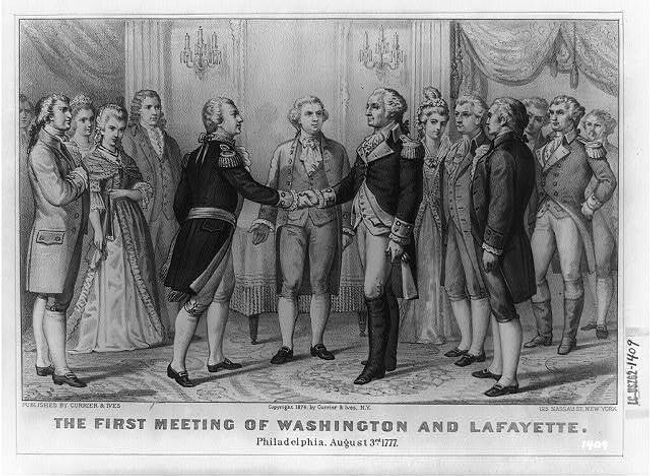
Brother Lafayette met General George Washington on August 5, 1777, forming an immediate bond. Brother Washington, impressed by the young man’s enthusiasm and Masonic affiliation, welcomed him onto his staff. Brother Lafayette saw his first combat the very next month at the Battle of Brandywine. He was wounded in the fray but displayed the remarkable bravery that would prove so essential in the years ahead.
From Valley Forge to Victory
The winter of 1777-78 is famous to this day for being exceedingly harsh. Brother Lafayette was stationed at Valley Forge and endured the bitter cold alongside his troops. The next year brought many battles, and he was to play an important role. Notably, in the Battle of Monmouth on June 28, he helped Brother Washington rally American forces against the retreating British.
In October 1778, Brother Lafayette sought permission to return to France to lobby the king for additional support alongside Brother Ben Franklin and John Adams. He returned successfully, bringing along 6,000 troops and six ships under the command of the Comte de Rochambeau. In 1781, serving as commander of the Virginia Continental forces, he helped pin General Lord Cornwallis’ army at Yorktown.
The French forces and those under Brother Washington joined Brother Lafayette's and they combined to lay siege to Yorktown until Cornwallis surrendered on October 19, 1781. Brother Lafayette, who spent years working to fight for the American cause, had been instrumental in the final assault on the British defenses. The success at Yorktown ultimately assured American independence and showcased Brother Lafayette's strategic brilliance.
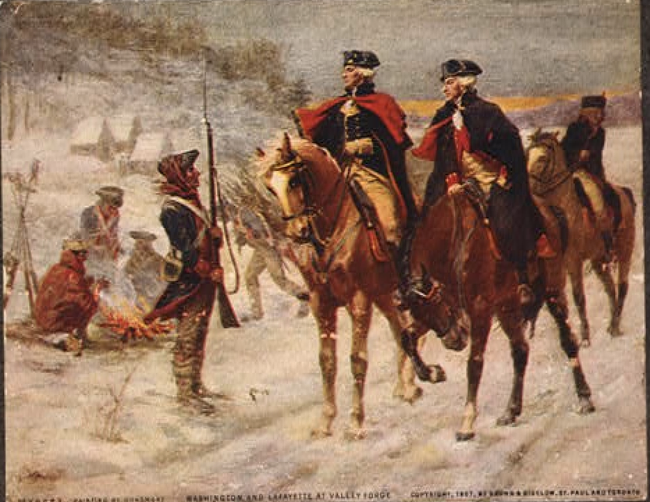
Return Home and The French Revolution
In early 1782, Brother Lafayette returned to France, where he received a hero's welcome at the Palace of Versailles. He was promoted to Maréchal de Camp (brigadier general) and was honored as a Knight of the Order of Saint Louis. Collaborating with Thomas Jefferson, Brother Lafayette worked to establish trade agreements between the U.S. and France, aiming to reduce America's debt to its ally.
A fervent advocate for human rights, Brother Lafayette publicly called for the end of the slave trade and equal rights for free Black individuals. In a 1783 letter to George Washington, he urged the emancipation of enslaved people. During a visit to Virginia in 1784, he addressed the Virginia House of Delegates, calling for the “liberty of all mankind” and the abolition of slavery.
As the French Revolution unfolded, Brother Lafayette's aristocratic position became increasingly complex. He maintained close ties with King Louis XVI and supported the idea of a constitutional monarchy although he held republican ideals in his heart. In the late 1780s, working with Jefferson, he helped draft the Declaration of the Rights of Man and of the Citizen, which he presented to the revolutionary National Assembly. Despite the turbulent political climate, Brother Lafayette continued to serve Louis XVI and Queen Marie-Antoinette, saving them from a mob during the invasion of Versailles on October 6, 1789. After the monarchy was overthrown in 1792, he attempted to defect to Austria but was captured and imprisoned at Olmütz until 1799, when General Napoleon Bonaparte secured his release.
Retirement and The Grand Tour
Although Brother Lafayette escaped the “Reign of Terror”, or a period of mass executions of civilians and perceived enemies of the French Revolution, his wife Adrienne was arrested, and many of her family members were executed. Upon his return to France, he declined Napoleon’s offer to join the newly formed Légion d’Honneur, opting instead to retire from public life. He also declined President Thomas Jefferson's offer to become governor of the newly acquired Louisiana territory.
In 1824, at the invitation of his old friend President James Monroe, Brother Lafayette returned to the United States. This emotional journey included a visit to Brother George Washington’s grave and a stay at Monticello hosted by the 81-year-old Thomas Jefferson. He also deepened his connection to Freemasonry when he became a Royal Arch Mason, joining Jerusalem Chapter No. 8 in New York City on September 12, 1824. He also joined the Knights Templar in Morton Commandery No. 4 and in Columbian Commandery No. 1, both of New York City. Finally, he received the Scottish Rite degrees in the Cerneau Supreme Council of NY and was coronated a 33° Mason and Honorary Grand Commander of that body.
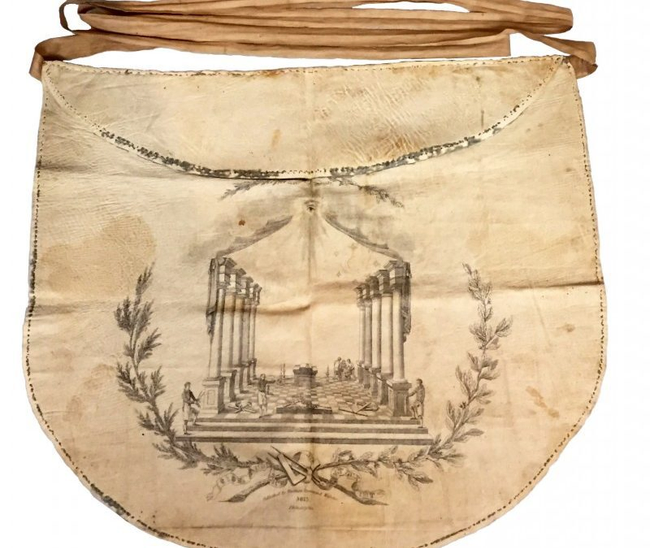
Brother Lafayette was warmly welcomed by massive crowds in every city he visited. On December 10, 1824, he made history as the first foreign citizen to address the U.S. House of Representatives. Originally planned as a four-month tour of the 13 original states, his visit extended to 16 months, covering 24 states, including a two-day visit to Cincinnati in May 1825.
Upon his return to France, Brother Lafayette remained popular despite his long absence from politics. The July Revolution of 1830 presented him with an opportunity to seize control of the government, which he declined. In his later years, he continued to serve France by advocating for liberal policies amidst the erosion of civil liberties under King Louis-Philippe.
Brother Lafayette contracted pneumonia and passed away at age 76 on May 20, 1834. He was buried next to his wife Adrienne at the Picpus Cemetery, according to his wishes, under soil from Bunker Hill. Following his death, both Houses of Congress, at President Andrew Jackson's request, were draped in black bunting for 30 days. Former President John Quincy Adams delivered a three-hour eulogy in his honor.
A Legacy of Liberty
Brother Marquis de Lafayette's journey from a young aristocrat driven by revolutionary ideals to a pivotal figure in the American fight for independence exemplifies the impact Freemasonry had on his life. His efforts in strengthening Franco-American relations, advocating for human rights, and his strategic military brilliance were instrumental in securing American independence. We honor Brother Lafayette not only as a hero of the American Revolution but also as a symbol of the enduring bond between Freemasonry and patriotism.
Related Stories
Discover additional Scottish Rite blogs and news on this topic.
-
A Jolly Masonic Mug
History
Read More about A Jolly Masonic Mug
-
The Life and Career of Brother Arnold Palmer
Famous Masons
Read More about The Life and Career of Brother Arnold Palmer
-
Manly P. Hall: Philosopher, Mystic, and Freemason
Famous Masons
Read More about Manly P. Hall: Philosopher, Mystic, and Freemason

